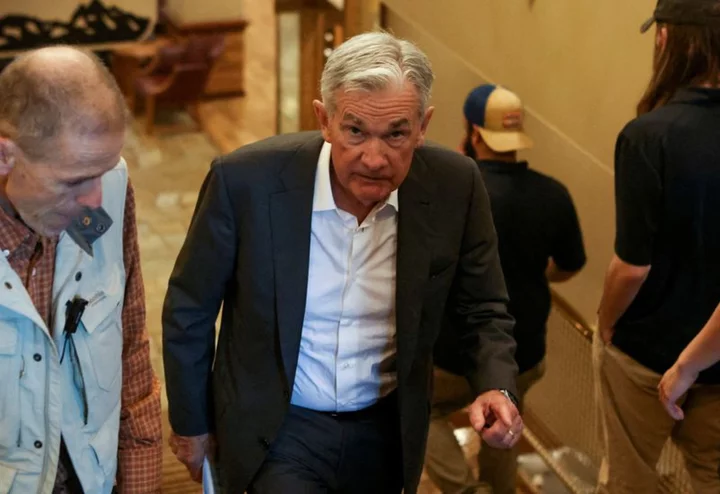A look at the day ahead in U.S. and global markets by Amanda Cooper.
One of the overarching market themes this year - aside from the hype around artificial intelligence - has been investors avidly building up bets on the Federal Reserve finally announcing an end to its cycle of rate hikes, only to have that optimism dashed.
There's no doubt that the U.S. central bank is nearing the end of its mission to wrestle down inflation. Headline consumer price pressures are rapidly abating, thanks to a wholesale retreat in food and energy prices. Headline inflation in July rose 3.2% on an annual basis - a far cry from last June's 9.1% - and nearing the Fed's 2% target.
There's just a couple of easily identifiable snags.
Inflation as reflected in the Fed's preferred data point - the core personal consumption in expenditures (PCE) index - is running at 4.1%, having peaked February 2022 at 5.4%.
The economy isn't generating jobs as quickly as it was a year ago, but it's still set to add another 170,000 in August, which will mean more than 25 million workers will have been added to non-farm payrolls since the depths of the COVID pandemic in April 2020.
And crucially, Fed Chair Jerome Powell has once again reinforced the "higher for longer" mantra that has underpinned most of his, and his officials', communications this year, no matter how much market participants have bet otherwise.
The dollar, which economist Mohammed El-Erian described earlier this year as "the cleanest dirty shirt" among world currencies, is set for a 2% gain in August, marking its strongest monthly performance since May, thanks in large part to anticipation of at least one more Fed rate hike before 2023 draws to a close.
U.S. two-year Treasury yields, the most sensitive to shifts in expectations for Fed monetary policy, posted their largest weekly rise in two months last week, after Powell's comments at the annual Jackson Hole Economic Policy Symposium.
He vowed to tread carefully with rate rises and rely on incoming data, but was clear about the endgame.
"It is the Fed's job to bring inflation down to our 2% goal, and we will do so," he said.
While some asset managers are keeping the faith that the Fed is at the end of the cycle, speculators are taking no such chances. In the week to Aug. 22, data from the Commodity Futures Trading Commission showed non-commercial market participants expanded their bearish holdings of U.S. two-year Treasury note futures to the most since at least 1990, reflecting a bet that two-year cash yields will continue to rise.
Money markets show traders believe the Fed has one more hike in the pipeline this year, which would bring its target rate to a range of 5.50%-5.75%, from 5.25%-5.50% right now.
Just three months ago, when rates were at 5.125%-5.37%, markets were betting on a year-end range of 5.00%-5.25%, implying at least one rate cut this year.
This week, investors get a dose of top-tier data to help shape their view on the Fed's next move. A second read of U.S. gross domestic product is due on Wednesday, while core PCE and August non-farm payrolls arrive on Thursday and Friday, respectively.
Key developments that should provide more direction to U.S. markets later on Monday:
* Dallas Fed August manufacturing business index
* Three-, six-month bill auctions; 2- and 5-year note auctions
(Reporting by Amanda Cooper; Editing by Kirsten Donovan)

